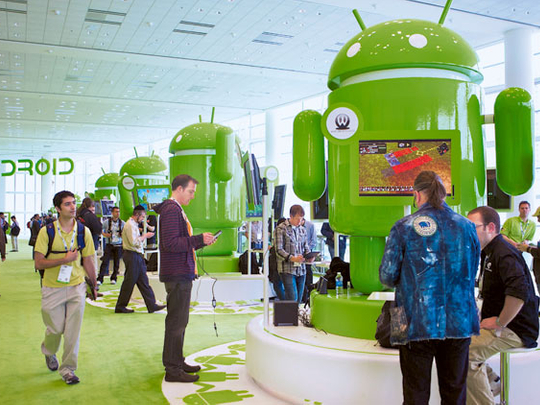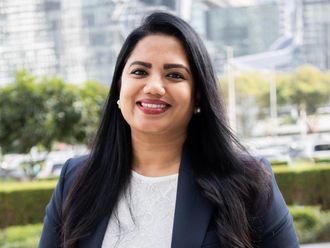
Much like the proverbial teacher’s pet, BlackBerry and iPhone users in the UAE were until recently seen as getting the cream of data packages and bundle offers. But after years of being left out in the cold, the field is finally levelling out as service providers, users and manufacturers drive the shift towards Android phones, with the market share of products using Google’s operating system steadily rising in recent years.
“Android is the fastest growing of all operating systems, giving us a year-on-year 30 per cent growth,” Izzat Kittaneh, Business Manager, Middle East and North Africa (Mena), Sony Mobile Communications, tells GN Focus. “Next quarter we plan to have only Android phones in our portfolio,” he says. The company’s latest range of NXT Series smartphones has been well received, and it is in the process of rolling out the Android Ice Cream Sandwich operating system across its range, a move it anticipates will strengthen its market position.
The new supremacy
According to research firm International Data Corporation (IDC), Android was the overall leader among mobile operating systems in the first quarter of this year, accounting for more than half of all smartphone shipments. It also boasted the longest list of smartphone vendor partners. Samsung was the largest contributor to Android’s success, accounting for 45.4 per cent of all Android phone shipments.
“In the UAE, we are leading the smartphone category with 31.1 per cent market share, according to data supplied by GfK, a market research firm, and are the number one smartphone vendor,” says Ashraf Fawakherji, General Manager, Telecommunications Group, Samsung Gulf Electronics.
The brand’s third-generation Galaxy S III hit shops recently. It is being pitched as a game changer with greater usability, content sharing and interactivity — and a piece that elevates the Android experience. The phone leads a set of new operator packages aimed at capitalising on the demand for Android phones. Etisalat recently teamed up with HTC on a bundle offer for its One X model. Although still not all pervasive, this is a change from the days when consumers were hard-pressed to find Android deals of the sort available to iPhone and BlackBerry buyers.
Yasser Al Yousuf, Director, Premium Personal Market, Commercial, du, agrees. “Our initial offers were with the iPhone and BlackBerry, but it was as per market demand. They have remained our best offers, but today our offer on the Samsung Galaxy S III is comparable to the iPhone offer.”
This Android wave comes in the wake of a November Bloomberg article that had Timothy Ghriskey, Chief Investment Officer, Solaris Group, and all-round Wall Street guru, refer to BlackBerry maker RIM as a ‘wounded puppy’ because of declining business, operating technology problems and sliding customer loyalty. However, iPhone sales continue to remain strong. The same IDC study put iOS alongside Android, reporting that the two systems accounted for eight out of ten smartphones shipped in the first quarter.
Price partners
Smartphone sales and pricing plans are intertwined. The more attractive the bundle, the more smartphones will be sold. “Apple realised this early on, and usually imposes its own pricing plans on operators,” Hicham Fadel, Senior Associate, Booz & Company, tells GN Focus. “These plans are usually generous in minutes and data. RIM also has a similar strategy in the way that it imposes a certain fee on every BlackBerry customer.
“Samsung and other Android phones are starting to realise this and are moving towards striking better partnerships with operators — partnerships that contain better visibility on pricing plans/data packages.”
Al Yousuf says nearly 50 per cent of all du customers use smartphones. Of these, 60 per cent choose either an iPhone or a BlackBerry. He expects the launch of new Android models to help drive a greater adoption.
Part of the appeal is the variety of choice Android offers, with phones available for all demographics. “The price of Android-based handsets in the market ranges from $120 (Dh441)-$900,” says Neeraj Seth, Senior Marketing Manager, HTC Middle East and North Africa. “This increases our chance of addressing a larger audience and not just limiting ourselves to the data plan offers available with operators.”
Thus far, the fragmented Android market meant that RIM and Apple were able to pull ahead of other manufacturers, working with operators to offer attractive price plans.
Matthew Willsher, Chief Marketing Officer, Etisalat, says the perception that UAE operators were partial towards Apple and RIM might well be true because a decade ago RIM led the industry by bringing push email to mobile phones. “BlackBerry got in really early into the game with not only a great network but also a great handset and has traditionally worked very closely with consumers and operators to have the right price plans,” says Willsher. Nokia was another market leader, but in recent months, it is Samsung that has moved ahead of the class, he adds. “As an operator we have never had a specific preference and move along as the industry has evolved,” he says.










